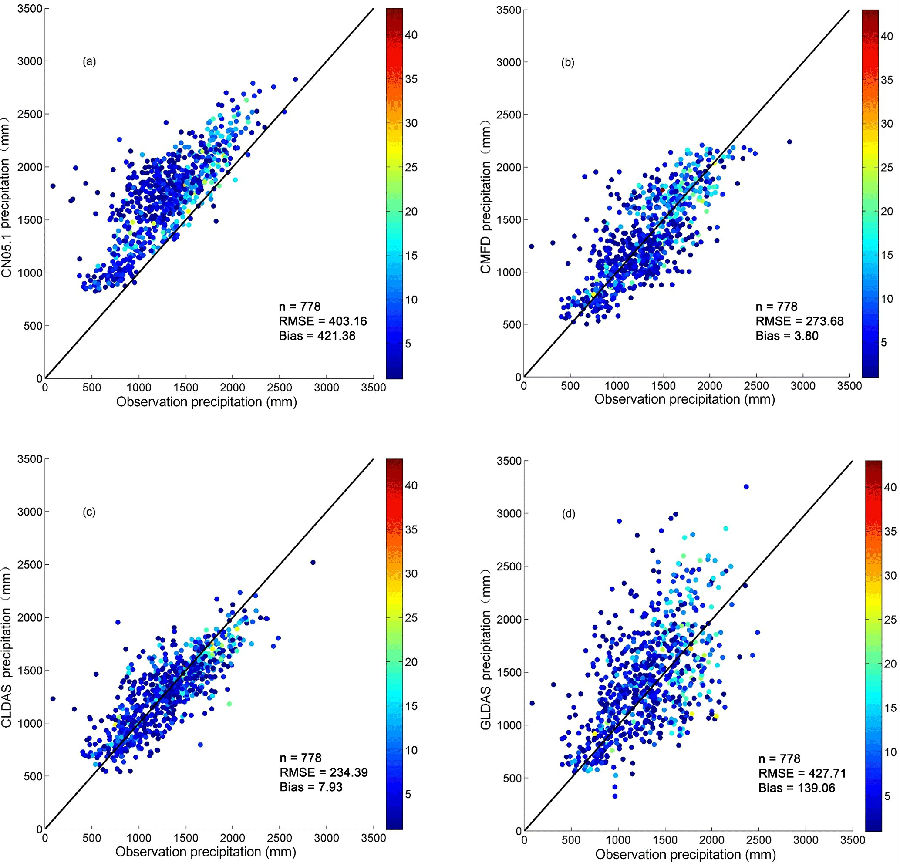Recently, graduate student Yang Fan published a paper titled "Evaluation of multiple forcing data sets for precipitation and shortwave radiation over major land areas of China" in the journal Hydrology and Earth System Science as the first author. This study systematically evaluates the performance of the two variables (i.e. precipitation and shortwave radiation) from commonly used forcing data sets over the most areas of China. Associate Professor of the department of earth system science Hui Lu is the corresponding author of this article.
Precipitation and shortwave radiation are important sources of water and energy for the ecosystem. They are also the important input parameters for land surface processes and climate change studies. The traditional observation method on station is limited by the number of sites and the location of distribution, which cannot meet the needs of large-scale research. Therefore, scientists used satellite observations, model simulations, and observation data to make a series of forcing data sets. In recent years, scientists from the Chinese Academy of Sciences and the China Meteorological Administration have separately produced two forcing data sets named CMFD (China Meteorological Forcing Dataset) and CLDAS (China Meteorological Administration Land Data Assimilation System) covering China and Asia. Due to the quality of the forcing data sets have an important impact on the results of land surface and climate models, it is essential to evaluate the driving data.
This study compared and analyzed two forcing data sets made by China researchers, one precipitation data named CN05.1 which is interpolated by the station data of the China Meteorological Administration, and the more developed GLDAS (Global Land Data Assimilation System) data made by the United States. The precipitation validation data were provided by the Ministry of Water Resources, while the shortwave radiation verification data were collected from the Qinghai-Tibet Institute of the Chinese Academy of Sciences, the Chinese Ecosystem Research Network of the Chinese Academy of Sciences, and the Heihe Experimental Station. The results show that the precipitation from CLDAS is most consistent with the performance of the verification data because of the large number of observation data were used; the CMFD also agrees well with the observation data on the annual scale, but the monthly precipitation data is abnormal after August 2014. CN05.1 showed a significant overestimation, mainly due to the fact that the data was only interpolated using mathematical methods and that there was a heavy error; because of the limited of the number of observation stations used by GLDAS, the dispersion of precipitation data was larger. From the comparison results of shortwave radiation, the CMFD has the best quality, and its RMSE and deviation compared with the verification data are the smallest; while CLDAS and GLDAS overestimate the shortwave radiation value heavily in most regions. The possible reason is that there are few actual stations for shortwave radiation in China, so the observation data integrated by CLDAS and GLDAS is limited. However, the CMFD merged a data set with high accuracy which is simulated by radiation stations and meteorological stations, this makes CMFD have higher quality.

Figure 1 Comparison results between forcing data sets and precipitation verification data (the color bar indicates the number of sites in the one grid from forcing data sets)
This study can provide some basis information data users when selecting data, and it can also help data providers to optimize data and improve data quality.
Hydrology and Earth System Science is a top journal in the field of hydrology and water resources, with an average impact factor of 5.064 over the past five years.
Article link: https://www.hydrol-earth-syst-sci.net/21/5805/2017/